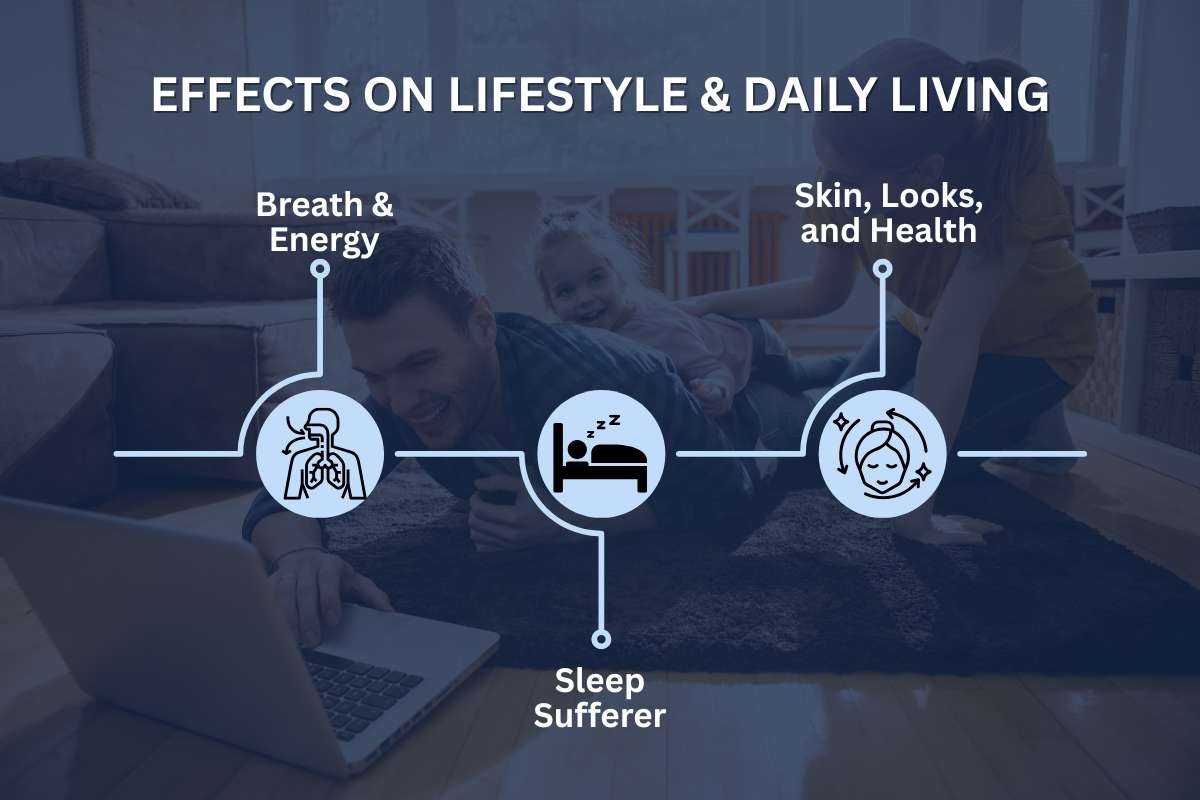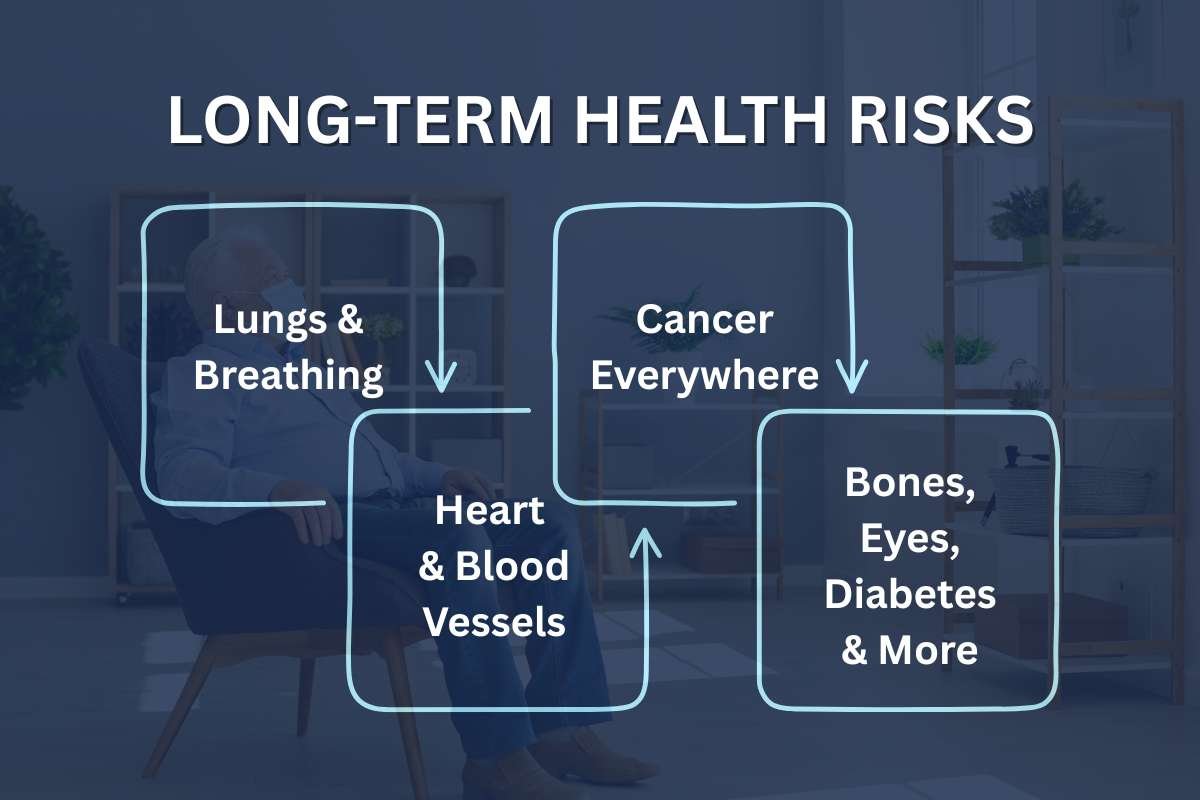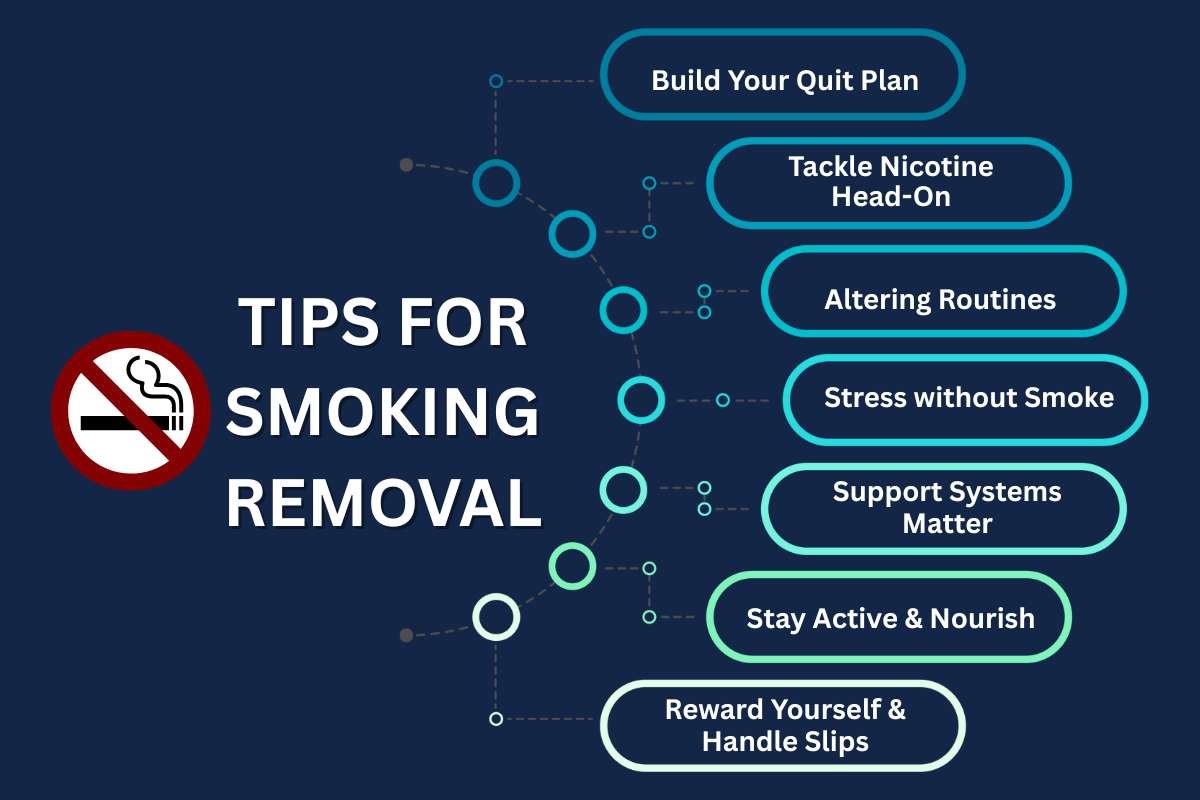It always begins with a single drag. One more puff and be done with it. It’s a vicious cycle. Smoking is an inevitable trap that one falls into, which often begins as a moment of rebellion or a way to fit in. Peer pressure and coping with stress are the common reasons for a habit that starts as “occasionally.” Surely, the whole illusion of portraying a calm “aura” while taking a puff is understandable, but the side effects of smoking cigarettes start to appear even without you realizing it.
Cigarettes release over 7,000 chemicals into your body, at least 69 of which are known to cause cancer. Apart from harming your lungs, these toxins spread through your blood, causing severe health conditions. Your heart beats faster, blood vessels narrow, your mood dips, and your skin ages long before its time. Breathing gets harder over the days, and your focus scatters quickly.
Even occasional smoke affects your body. Your immune system weakens, immensely slowing down your digestion and increasing the risk of diabetes. This article will discuss the significant side effects of smoking cigarettes and tips to stay healthy and quit the habit forever.
Starting from a basic level: What is smoking?
When you smoke, you’re breathing in and out smoke from a burning plant, often tobacco rolled into a cigarette. You light one end, and as you puff, the smoke enters your mouth, throat, and lungs. From there, it quickly travels through your blood to your brain and other body parts. While we’re mainly talking about tobacco cigarettes here, people also smoke cigars, pipes, marijuana, or even herbal cigarettes.
Deconstructing a Cigarette
Commercially made cigarettes generally contain a few main parts:
- Plant material: If it’s a tobacco cigarette, this means dried and processed tobacco leaves and stems.
- A paper wrapper: This is the paper that holds everything together.
- A filter: Often called the cigarette butt, this part catches bigger pieces of the burning tobacco as the smoke goes through it and into your mouth.
Why Are People Addicted to the Smoking Habit?
1. Nicotine’s Influence
Okay, nicotine is the major problem. It rushes to your brain in seconds, boosting dopamine and making you feel calm or focused for a little while. However, when the buzz fades, nicotine withdrawal creeps in with irritability, rough mood swings, restlessness, and brain fog. That low feeling pushes you back for another puff. Smokers tend to fall into this loop, becoming chemically dependent in just a few weeks.
2. Habit Woven into the Day
Smoking feels like a daily routine. You feel like puffing after a meal, with morning coffee, during phone calls, and on breaks. Our brain links pleasure to these moments. Soon, reaching for a cigarette becomes a comfort and fills empty habits.
3. Stress Buster
At first, smoking seems like a break from stress. But it’s a double-edged sword. Nicotine helps at the moment but triggers withdrawal soon after, making stress and anxiety worse overall. The effects of smoking cigarettes on emotions are sneaky; your body learns to expect nicotine before you even know you want it.
Effects of Smoking Cigarettes on Lifestyle and Daily Living

1. Breath and Energy
Each smoke cloud fills your lungs with tar. This makes it harder for your muscles to get oxygen, forcing your heart to work overtime and turning simple actions like walking or climbing stairs into a struggle.
2. Sleep Sufferer
Nicotine is a stimulant that disrupts quality sleep. It cuts into deep, restorative stages and lengthens the time it takes to fall asleep. Without proper rest, your mood zig, memory blurs, and motivation dips. It’s a nightly thief of vitality.
3. Skin, Looks, and Health
Smoke steals your glow. It damages collagen and blood flow, causing premature wrinkles and dull skin. Yellow teeth, stained nails, and bad breath are all side effects. Socially and emotionally, looking and feeling unwell can drag your self-esteem down.
Long-Term Effects of Smoking Cigarettes on Health Risks

1 → Lungs & Breathing
The effects of smoking cigarettes on the lungs are harsh. Chronic bronchitis and emphysema block airflow and destroy lung tissue. That sticky cough, constant phlegm, and short breath are just the start. Smoking causes around 85–90 % of COPD cases.
2 → Heart & Blood Vessels
Nicotine raises blood pressure and makes blood thick. That increases your risk of a heart attack by 2–4 times and stroke, too. It promotes plaque buildup and damages artery linings, so your heart has to work harder to do everyday tasks.
3.→ Cancer Everywhere
Smoking contributes to cancers of the lung, throat, mouth, esophagus, pancreas, bladder, liver, colon, cervix, you name it. It damages DNA, weakens immune systems, and turns your body’s natural protectors into accomplices.
4. → Bones, Eyes, Diabetes & More
Smoking weakens bones, increasing fracture risks. It speeds up age-related blindness and cataracts. Metabolism gets disrupted, and your chance of developing type 2 diabetes rises. It can even cause infertility and birth complications.
Tips for Smoking Removal

1. Build Your Quit Plan
Give yourself an apparent reason, such as health, savings, or loved ones. Pick a quit date and write it down. Tracking smoke-free days boosts morale. Start with 24 hours, then a week, then a month.
2. Tackle Nicotine Head-On
Use NRT-like patches or gum to calm withdrawal. These add low-dose nicotine, easing your brain off the drug slowly. Doctors may also use meds like bupropion or varenicline; they help control cravings and depression, but need medical guidance.
3. Altering Routines
Change daily cues tied to smoking, drink tea instead of coffee, take new walking routes, and chew gum after meals. Replace smoking with healthier habits until the craving fades.
4. Stress without Smoke
Stress relief doesn’t need a lighter. Try breathing exercises, a few yoga stretches, a quick walk, journaling, or chatting with a friend. Slowly, you’ll learn to soothe your nerves without smoking.
5. Support Systems Matter
Talk to quit coaches or therapists, phone lines, online forums, or group classes to double your success odds. Friends and family can cheer you on or distract you during challenging moments.
6. Stay Active & Nourish
Move your body often. Walk, dance, stretch, anything to keep blood flowing and moods lifted. Focus on whole foods, veggies, fruits, and whole grains to feel stronger and more energized.
7. Reward Yourself & Handle Slips
Use smoke-free money for small treats. If you slip, don’t beat yourself up; look back at what led to it, learn, and then jump back on track.
Conclusion
The effects of smoking cigarettes extend into every part of your life: breath, skin, heart, bones, emotions, sleep, and appearance. Damage is real and profound. However, quitting brings healing, and recovery starts fast. Heart rate drops in 24 hours, breathing improves in weeks, and long-term risks keep sliding the longer you stay smoke-free. With a plan, support, and patience, you can shake free of addiction, regain energy, better sleep, clearer skin, and brighter days. Your body remembers how to heal; help it do so.
FAQs
Q1: How soon do I feel better after quitting?
- Heart rate drops within a day.
- Breathing improves in 1–3 weeks as lung function rebounds.
- Cholesterol and blood pressure improve in a few months.
Q2: Will quitting reverse my wrinkles or lung damage?
- Some skin and lung damage may stay. But quitting halts further decline and lets your body repair where it can.
Q3: Are nicotine patches safe?
- Yes. Patches, gum, and lozenges deliver low, controlled nicotine, much safer than smoking, and reduce cravings.
Q4. What if I slip up?
- A slip is not a failure. Learn what triggered it, adjust your plan, and recommit. Many quitters try a few times before success.
Q5. Can stress lead me back to smoking?
- It can. That’s why stress tools are key; deep breathing, walking, or talking things out all help you say no to a cigarette.









